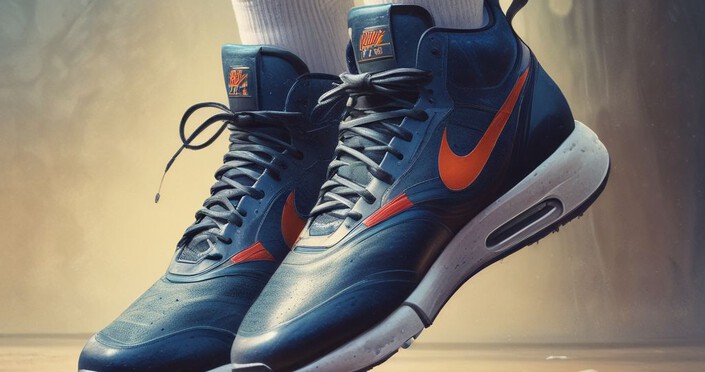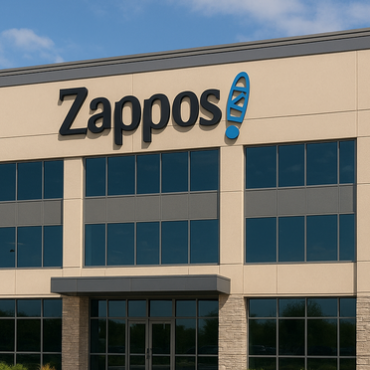Nike Athletic Footwear

Nike Athletic Footwear and Sports Business
Nike Athletic Footwear Company is the world’s leading for sports is currently determined to embrace environment. Nike’s efforts are grounded on the vision of creating sustainable economy that favors the planet, the people as well as Nike Athletic Footwear Company in terms of profit. In this regard, Nike has taken an initiative of designing products and persuading their chain supply as it balances it with protecting the interests of sports all around the world. Writers who offer marketing management assignment help at Edudorm essay writing service notes that this plan has been in place since 1990’s whereby it has embraced practices such as recycling shoes and designing sport accessories from the waste products to reduce its environment fingerprint. Nike has gone an extra mile to work with different NGOs who have shown their interests in taking part in environment conservation (Global Compact., & United Nations, 2007).
Objectives of Nike Athletic Footwear Company
The objectives of Nike Athletic Footwear Company and aims have been placed in a scheduled timeline whereby by 2005, they introduced a product line that insisted on designing those products that could be easily sustained based on the principles of sustainability. By, 2011, Nike Athletic Footwear Company announced their target of manufacturing the footwear at the minimum environmental standards. Experts who offer strategic management assignment help at Edudorm essay writing service indicates that accessories and apparels were scheduled to be done by 2015 while the sports equipment targeted to be done by 2020. Nike has so far made tremendous steps in embracing the environment sustainability as it shall be discussed concerning the friendly environmental forms of manufacturing that has been adopted by Nike Athletic Footwear Company Global Compact., & United Nations. (2007).
Nike Athletic Footwear Company Investment
First, Nike has invested much of its resources in establishing new and innovative means of designing products that are environment friendly. This has been evident by how Nike Athletic Footwear Company has managed the power consumptions and resources which are globally needed to run the manufacturing processes. The raw products for Nike’s production are basically water, textile materials as well as energy which are progressively running scarce due to competition Global Compact., & United Nations. (2007). Nike has therefore customized its line of product so as to afford a variety of products that meet market demands for sports. Authors who offer operations management assignment help at Edudorm essay writing service points that Nike Athletic Footwear Company has also taken advantage of the popular brand value to spread the message of environmental conservation on global basis and action. This invites other manufacturers to collaborate with Nike to conserve environment. In this regard, therefore, Nike has spent the last decade to gain the full understanding of how environmental impacts can be reduced across its levels of production.
Environmental Impact
The Nike Company has focused on high-volume materials that have low impact on the environmental degradation. These materials include recycled polyester as well as Better Cotton. Through the recycling program, Nike Athletic Footwear Company is progressively approaching the critical work of achieving a closed-loop future (Lumpkin & Katz, 2011). Waste products are remanufactured and turned into premium products. Tutors who offer corporate strategy assignment help at Edudorm essay writing service acknowledges that Nike Athletic Footwear Company has made a historical achievement of diverting 92% of its total waste from being drained as landfill by transforming it into premium materials used for designing the footwear accessories. The only impact is much felt when the manufacturing is processing and finishing the materials and this would require smarter minds to come up with strategic remedies for this (Lumpkin & Katz, 2011).
Next, Nike has established a two-fold energy strategy whose main focus is to maintain efficiency measures and balancing the transition into renewable sources of energy. In 2008, Nike Athletic Footwear Company launched the Energy and Carbon power and many achievements have been recorded. Mentors who offer marketing assignment help at Edudorm essay writing service recognizes that the energy consumptions have reduced by half a unit which implies that even the emissions have been reduced by half. This was a long-term strategy which is expected to drive Nike into more achievement up to greater levels of environment friendliness.
Nike Athletic Footwear Company Sport Related Products
Nike offers a wide range of sport related products that uniquely fit each kind of player. Some of these items include sport shoes, clothing such as shorts, track suits and t-shirts, bags, swimming costumes, watches, eyewear, sport-designed socks, balls, volleyball and football nets among other numerous tiny but essential accessories. All these have been integrated by Nike with an aim of nurturing talents and equipping the various players with every relevant costume or tool for their comfort (Pimentel, Westra & Noss, 2000). Instructors who offer business development assignment help at Edudorm essay writing service argues that Nike Athletic Footwear Company is also continuing to seek creative and innovative ways of coming up with more integrated products for sports. These products however depreciate in value as they get used up in the players’ courses. Some of them are usually damped while others are recycled back by Nike for reproduction. They are disposed as described below:
First, Nike Athletic Footwear Company delivers it products using a paper-bug package. The carton box was initially used and could just be disposed soon after the good was delivered to the customers. Nike Athletic Footwear Company has had a difficult time trying to be creative to come up with an innovative design that came to reduce packaging waste. With the assistance from the engineering table, the company came up with alternative packaging box which could save 30% of material that the previous one used. It was recyclable and by the end of 2011, it is estimated that the boxes saved 200, 000 trees at annual basis just because of the improved packaging. Teachers who offer 4P of marketing assignment help at Edudorm essay writing service says that Nike has also cherished in supplying bags for sports that are suitable enough to carry a number of accessories. These bags are however designed firmly such that they last long. They are however recycled by other companies when they are used up for refurnishing (Pimentel, Westra & Noss, 2000).
Nike Athletic Footwear Company also manufactures some clothing such as t-shirts, sweaters and socks among others usually labeled Nike. These are basically essential to the players such as the footballers and athletes among other sports. These accessories are however not manufactured in bulk and therefore their disposal is minimal. The clothing however should be recycled because they have a significant impact on the environment especially soil pollution (Pimentel, Westra & Noss, 2000).
Conclusion
The Nike Company has made recommendable job in balancing between meeting its needs, those of the customers as well as those of the adjacent environment. Major items such as shoes and clothes are usually recycled to make new and premium products for sale. Nike Athletic Footwear Company has also redeemed resources that are commonly used in the production such as water and energy. Trainers who offer project management assignment help at Edudorm essay writing service states that the company is indeed determined to manage its operations to ensure that the products and the production embrace environmental friendly standards. Other minor accessories including watches, eyewear, swimwear, are not rampant enough to be considerably counted because the area of focus for Nike Athletic Footwear Company is sport shoes (Pimentel, Westra & Noss, 2000).
References
Global Compact, & United Nations. (2007). Embedding human rights in business practice II: A joint publication of the United Nations Global Compact and the Office of the High Commissioner for Human Rights. New York, N.Y.? United Nations Global Compact.
Lumpkin, G. T., & Katz, J. A. (2011). Social and sustainable entrepreneurship. Bingley: Emerald Group Pub.
Pimentel, D., Westra, L., & Noss, R. F. (2000). Ecological integrity: Integrating environment, conservation, and health. Washington, D.C: Island Press.


